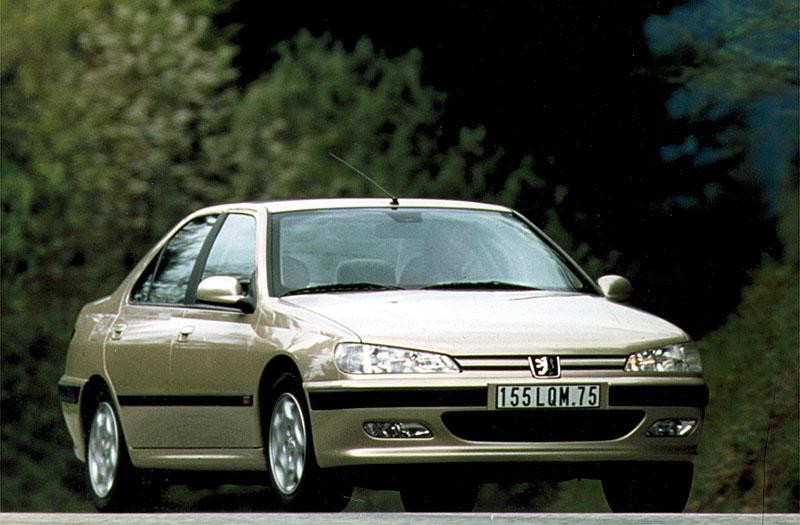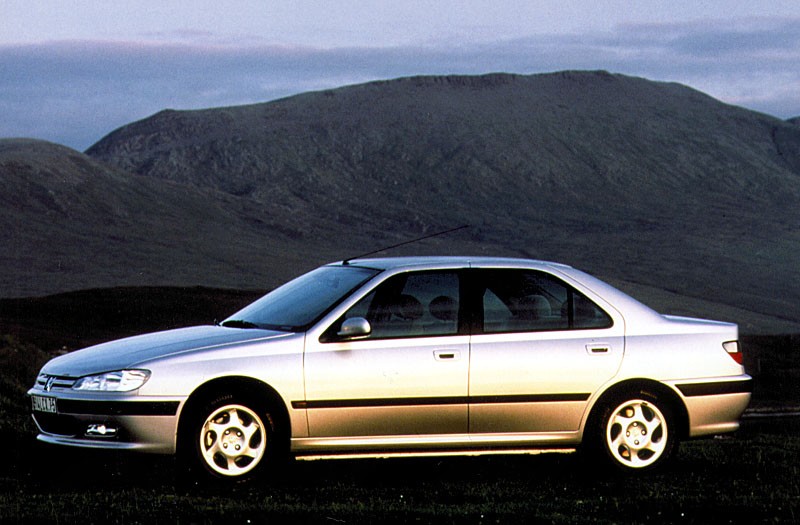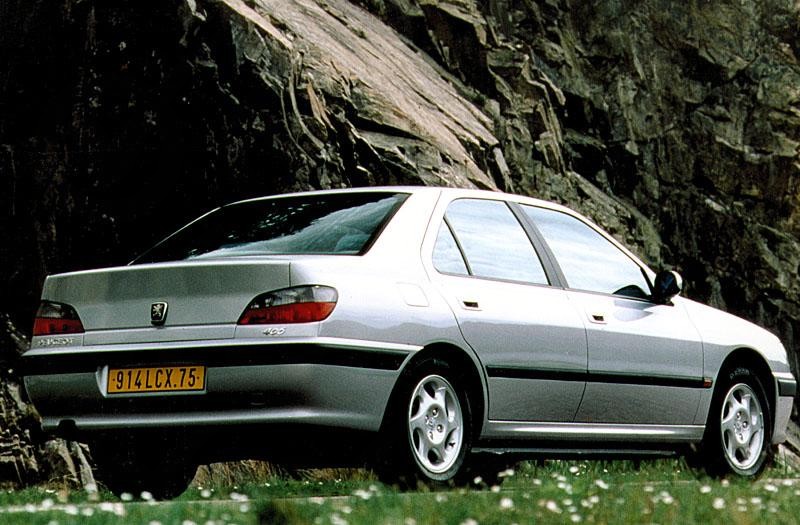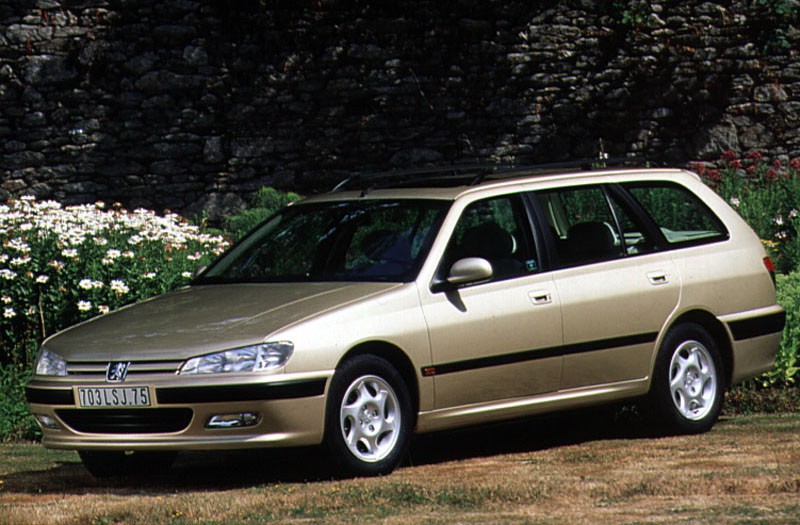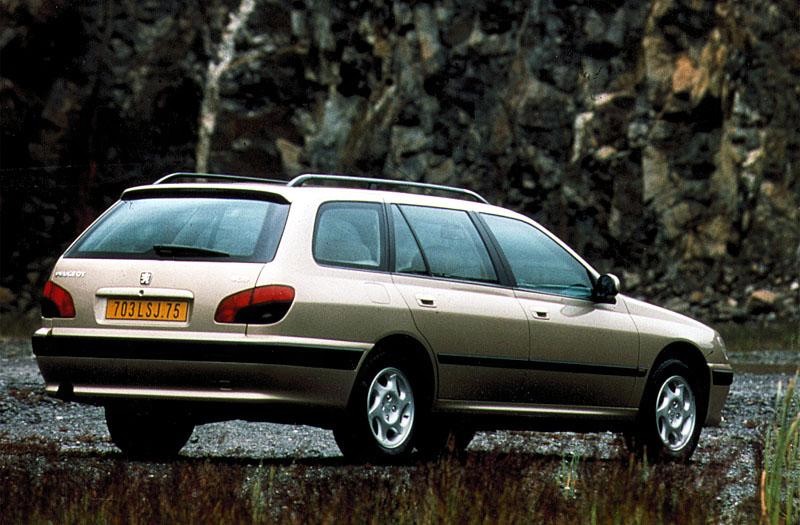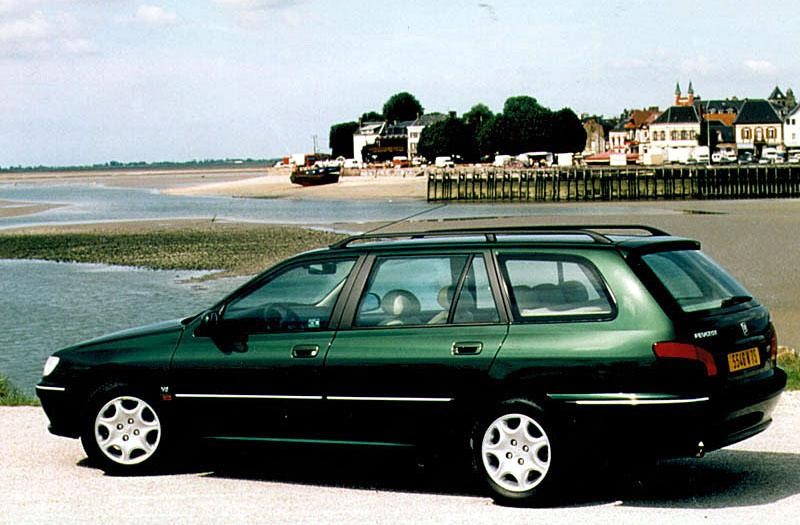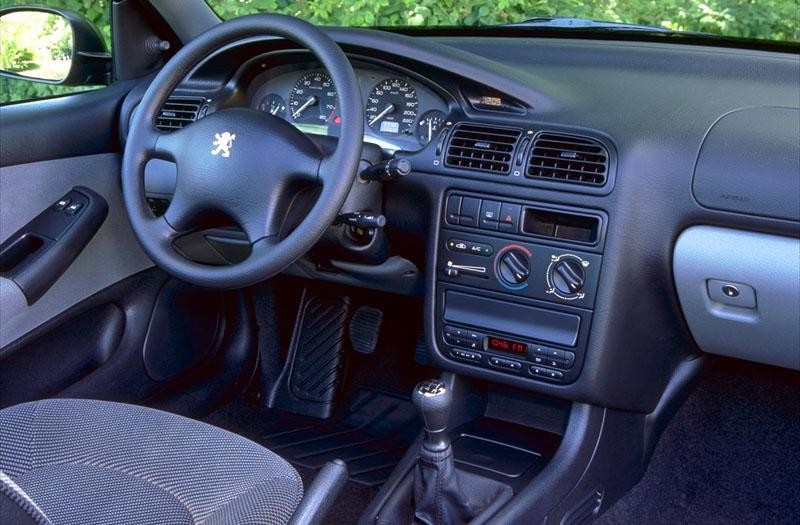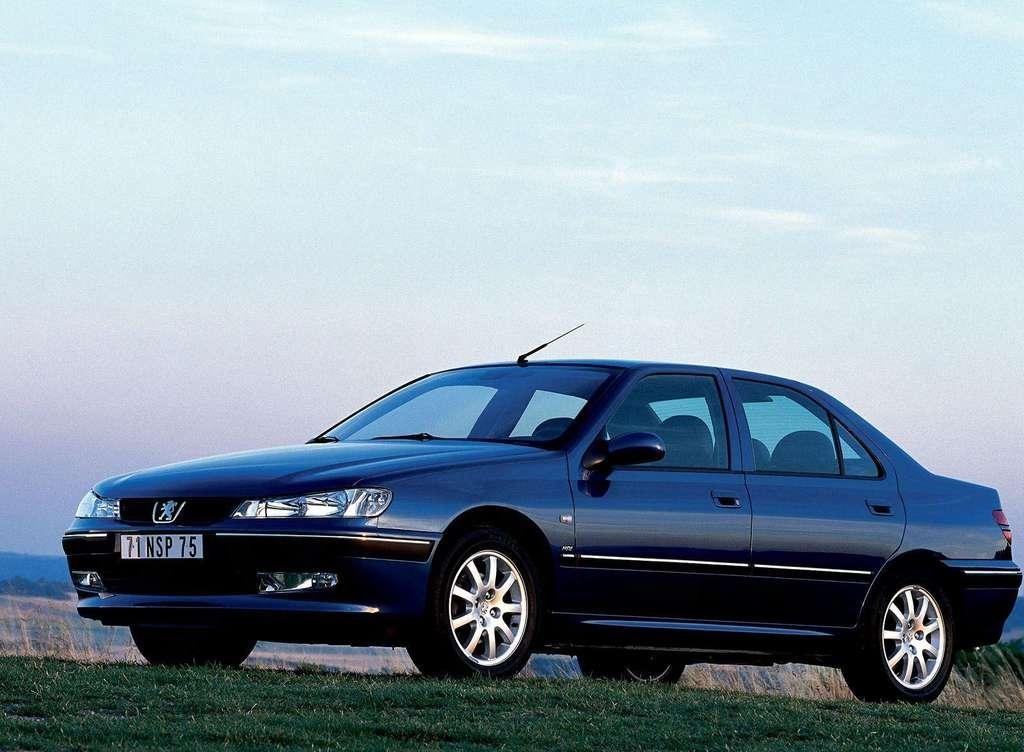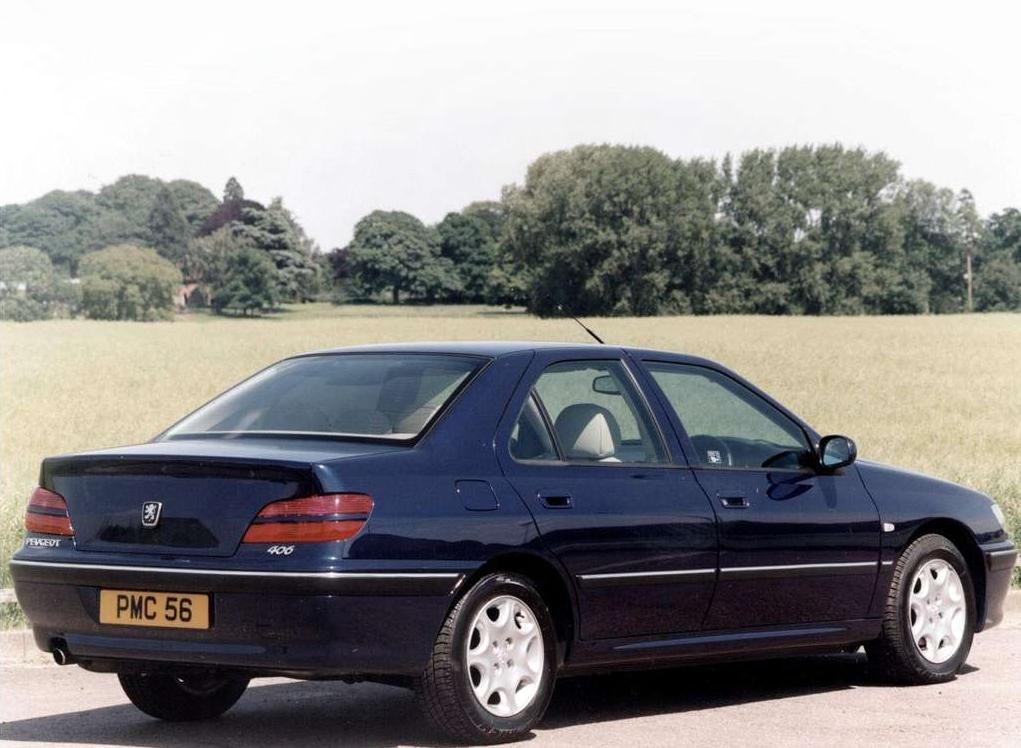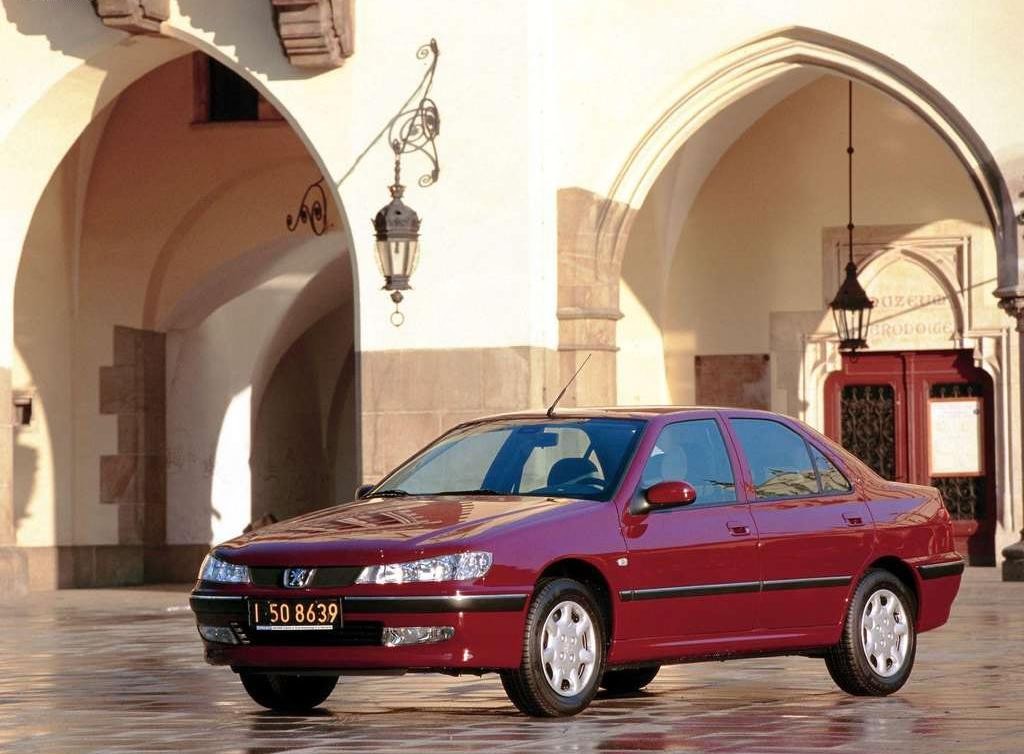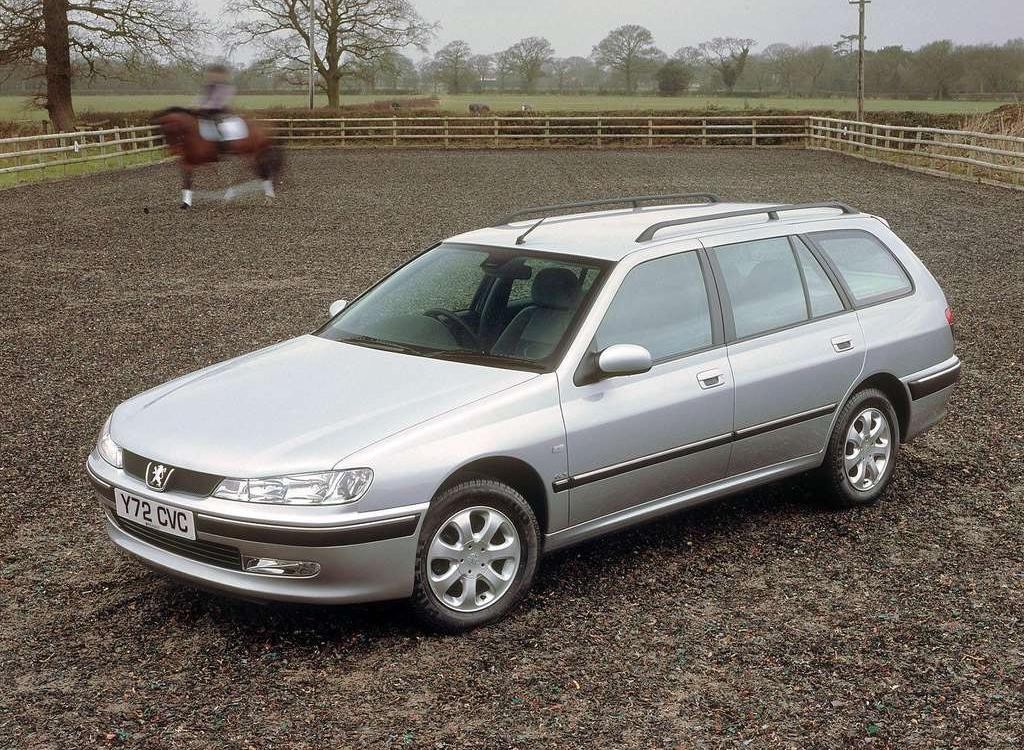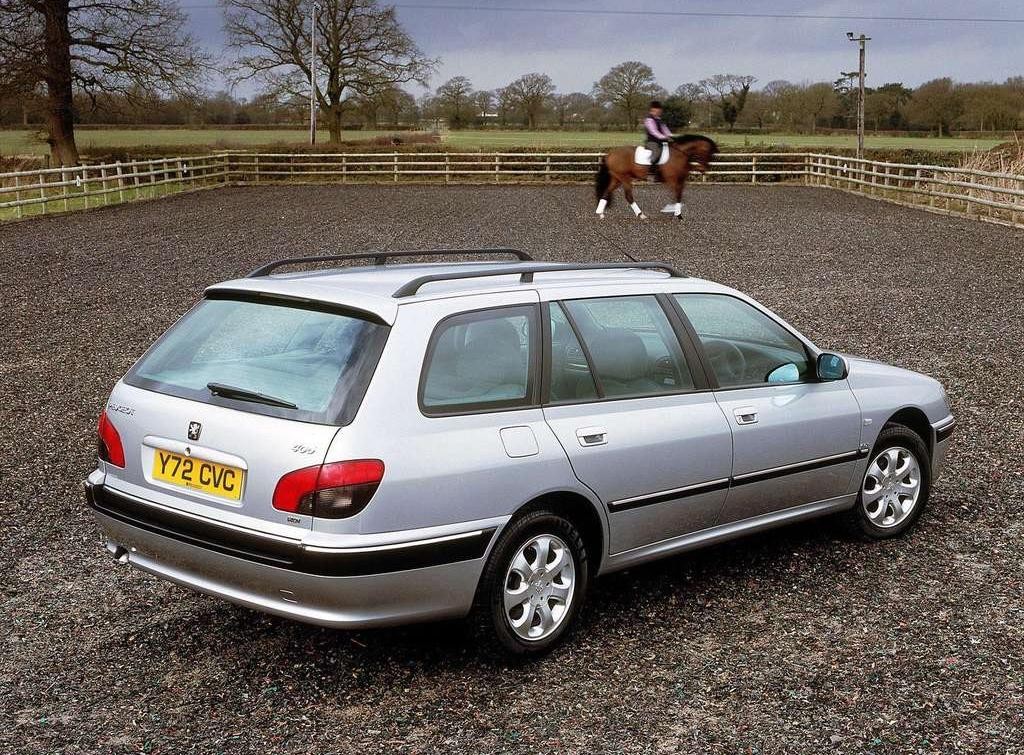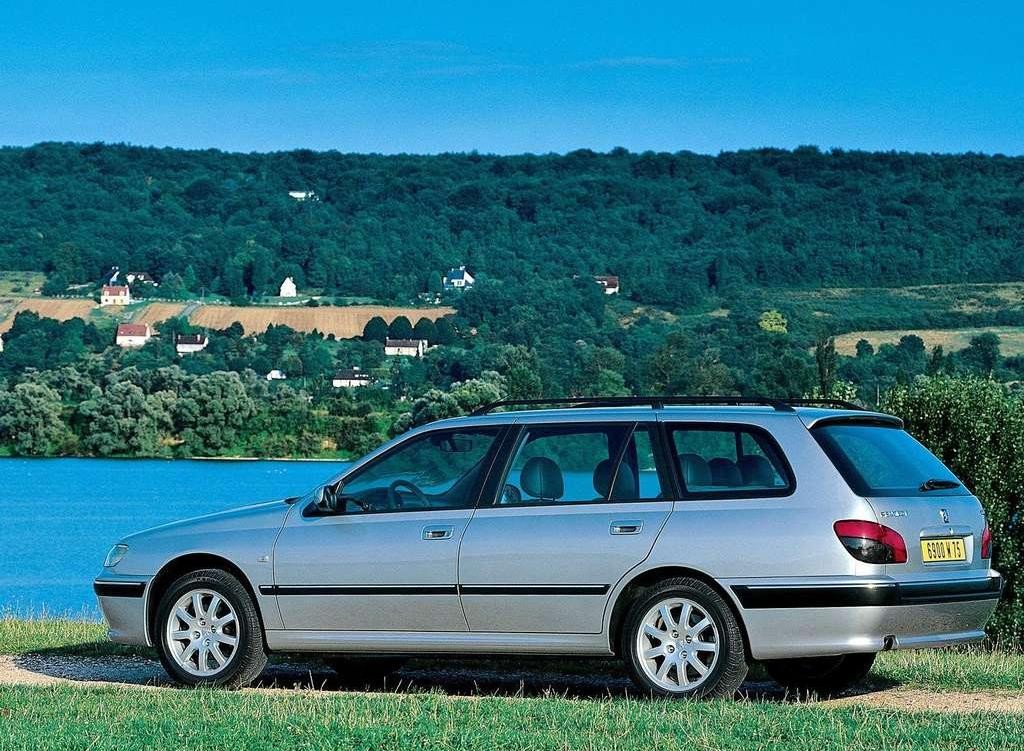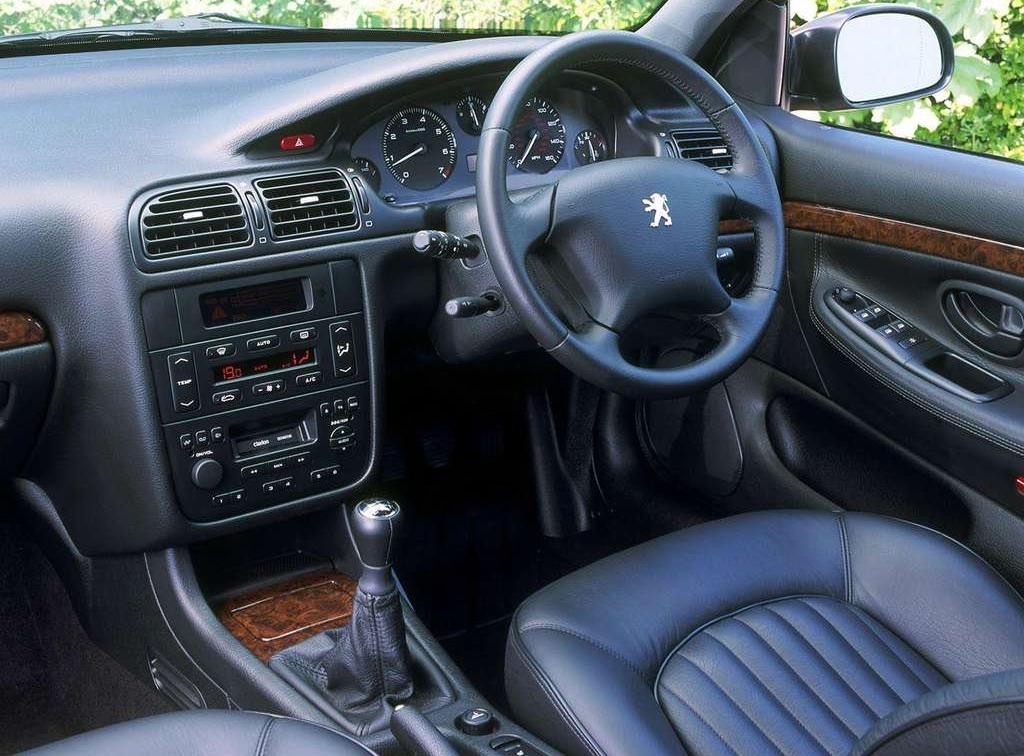
- Frugal turbo-diesel engines
- Refined 2.9-litre V6 petrol engine
- Comfortable ride
- 406 SV has competent dynamics
- For D9 406, quiet and well-insulated cabin
- Turbo-diesel engines sluggish on take-off and can be noisy
- For V6 engine, automatic transmission slow to kickdown
- Front seats not designed for larger occupants
- Limited rear seat legroom
- Plain interior
Review: Peugeot D8 406 (1996-99)
Overview
Released in September 1996, the Peugeot D8 406 was initially available as a mid-size sedan, with wagon models following in March 1998. The front-wheel drive 406 was available with three different engines and in ST, STDT and SV editions (see table below).
Engines
Of the engines,
- A 2.0-litre XU10 J4R four-cylinder petrol engine had double overhead camshafts, four valves per cylinder and a compression ratio of 10.4:1;
- A cast-iron 2.1-litre XUD11 BTE four-cylinder turbo-diesel engine with a single overhead camshaft, three valves per cylinder, Electronically Programmed Injection Control (EPIC), exhaust gas recycling and a compression ratio of 21.5:1; and,
- An aluminium, 2.9-litre ES9 V6 petrol engine with double over head camshafts, four valves per cylinder and a compression ratio of 10.5:1.
Dimensions
The 406 sedan was 4555 mm long, 1764 mm wide, 1396 mm tall and had a 2700 mm long wheelbase; wagon models, however, were 160 mm longer (at 4715 mm) and had a 54 mm higher roofline (1450 mm), though other dimensions were unchanged. Of the wagon models, the 2.1 TD variants had seven seats, including fold-away third-row seats; the 3.0 V6 variants, however, had five seats.
Suspension
The 406 had MacPherson strut front suspension with subframe-mounted lower wishbones and an anti-roll bar, while the multi-link rear suspension had trailing arms, lower transverse links, separate coil springs and an anti-roll bar.
| Body | Variant | Edition | Years | Engine | Trans. | Peak power | Peak torque |
|---|---|---|---|---|---|---|---|
| Sedan | 2.0 | ST | 1996-99 | 2.0-litre petrol I4 | 5sp man., 4sp auto |
100 kW at 5500 rpm | 187 Nm at 4200 rpm |
| 2.1 TD | STDT | 1997-99 | 2.1-litre turbo-diesel I4 | 5sp man. | 82 kW at 4300 rpm | 251 Nm at 2000 rpm | |
| 3.0 V6 | SV | 1997-99 | 2.9-litre petrol V6 | 5sp man., 4sp auto |
144 kW at 5500 rpm | 267 Nm at 4000 rpm | |
| Wagon | 2.1 TD | STDT (7 seats) |
1998-99 | 2.1-litre turbo-diesel I4 | 5sp man. | 82 kW at 4300 rpm | 251 Nm at 2000 rpm |
| 3.0 V6 | SV (5 seats) |
1999 | 2.9-litre petrol V6 | 4sp auto | 144 kW at 5500 rpm | 267 Nm at 4000 rpm |
Safety equipment
Standard safety equipment for the D8 406 included dual front airbags, ABS and front seatbelt pretensioners.
Euro NCAP crash testing
In Euro NCAP crash testing , a 1997 Peugeot 406 sedan – fitted with a 1.8-litre petrol engine and equipped with dual front airbags – received a two star adult occupant protection rating with a score of 15. In the offset crash test, the driver’s knees struck stiff structures behind the lower fascia, presenting a serious risk of injuries to the knees, thighs and pelvis; the steering was also pushed back during the impact and chest protection was rated as marginal. In the side impact test, chest protection for the driver was rated as weak, with pelvis protection rated as marginal.
Features
Standard features for the Peugeot D8 406 ST and STDT included a six speaker sound system with a radio and cassette player, air conditioning, 60/40 split and folding rear seats, remote central locking, power windows and mirrors, a height and reach adjustable steering wheel; models with automatic transmissions were also fitted with cruise control. The STDT editions were further equipped with 15-inch alloy wheels and an immobiliser.
Beyond this, the range-topping 406 SV added climate control air conditioning, front fog lights and woodgrain interior trim.
From May 1998, the 406ST was fitted with an immobiliser; the ‘Sublime’ pattern velour trim was also replaced with a ‘Dune’ design available in grey and beige.
Review: Peugeot D9 406 (1999-04)
Overview
Released in August 1999, the D9 406 introduced a revised range with new turbo-diesel engines (the 2′.0 HDi’ variants) and 2.0 variants with manual transmissions were fitted with the more powerful EW10 J4 engine (as opposed to the XU10J4R engine in their automatic counterparts).
Engines
Of the engines,
- 2.0-litre EW10 J4 petrol engine had double overhead camshafts, four valves per cylinder and a compression ratio of 10.8:1; and,
- The 2.0-litre DW10 ATED turbo-diesel engine had common-rail injection, an intercooler, four valves per cylinder and a compression ratio of 18.0:1.
Styling changes
Visually, the D9 406 could be identified by its higher, longer and more curved bonnet with pronounced ribbing, re-profiled bumpers with chrome trim and slimmer glass ‘diamond-effect’ headlights. Inside, the front seats were reshaped and featured a lengthened cushion for greater thigh support; sedans were also fitted with a third rear headrest.
D9 upgrades
Compared to its D8 predecessor, the D9 406 provided greater low-speed ride comfort due to the introduction of gas-pressurised shock absorbers. Greater refinement was also attributable to a glass fibre bonnet insulation package and sound deadening mouldings in the passenger compartment; the suspension was also revised with the lower suspension pivot ball joint from the 406 Coupe , Teflon rings on the rear anti-roll bar bearings and sheathed spring ends.
| Body | Variant | Edition | Engine | Years | Trans. | Peak power | Peak torque |
|---|---|---|---|---|---|---|---|
| Sedan | 2.0 | ST | 2.0-litre petrol I4 | 1999-04 | 5sp man. | 102 kW at 6000 rpm | 194 Nm at 4100 rpm |
| 1999-04 | 4sp auto | 100 kW at 5500 rpm | 187 Nm at 4200 rpm | ||||
| 2.0 HDi | ST | 2.0-litre turbo-diesel I4 | 1999-04 | 5sp man. | 82 kW at 4000 rpm | 255 Nm at 1750 rpm | |
| 2002-04 | 4sp auto | ||||||
| 3.0 V6 | SV | 2.9-litre petrol V6 | 1999-00 | 5sp man., 4sp auto |
144 kW at 5500 rpm | 267 Nm at 4000 rpm | |
| 2000-04 | 5sp man., 4sp auto |
157 kW at 6000 rpm | 285 Nm at 3750 rpm | ||||
| Wagon | 2.0 HDi | ST | 2.0-litre turbo-diesel I4 | 1999-04 | 5sp man. | 82 kW at 4000 rpm | 255 Nm at 1750 rpm |
| 2001-04 | 4sp auto | ||||||
| 3.0 V6 | SV | 2.9-litre petrol V6 | 1999-00 | 4sp auto | 144 kW at 5500 rpm | 267 Nm at 4000 rpm | |
| 2000-04 | 4sp auto | 157 kW at 6000 rpm | 285 Nm at 3750 rpm |
Safety equipment
Compared to its D8 predecessor, standard safety equipment for the D9 406 was largely unchanged for the ST editions, though the SV editions were further equipped with seat-mounted front side airbags (with head and thorax protection). From September 2000, front side airbags were fitted as standard; from June 2003, the 406 was fitted with electronic brake force distribution as standard.
Euro NCAP crash testing
In Euro NCAP crash testing , a 2001 406 sedan – fitted with a 1.8-litre petrol engine and equipped with dual front airbags and front side airbags (with head extensions) – received a three star adult occupant protection rating with a score of 18. In the offset crash test, the footwell ruptured, providing a poor level of protection for the driver’s feet; hard areas under the fascia also resulted in leg protection being rated as marginal. In the side impact test, the side airbags did not fully deploy, nor protect the head or chest effectively, such that chest protection was rated as weak and head protection as marginal.
Features
Compared to its D8 predecessor, standard features for the D9 406 were extended to include climate control air conditioning, front fog lights, rain-sensing wipers and a height adjustable driver’s seat. The SV editions were further equipped with a CD player, power adjustable front seats, leather-wrapped steering wheel and trip computer.
In September 2000, standard featured were extended to include 15-inch alloy wheels (previously omitted from the 2.0 ST) and a CD player; SV editions also gained a six-disc CD changer, leather seats and a leather-wrapped steering wheel.
From June 2003, a multi-function trip computer was fitted as standard.
Related links
